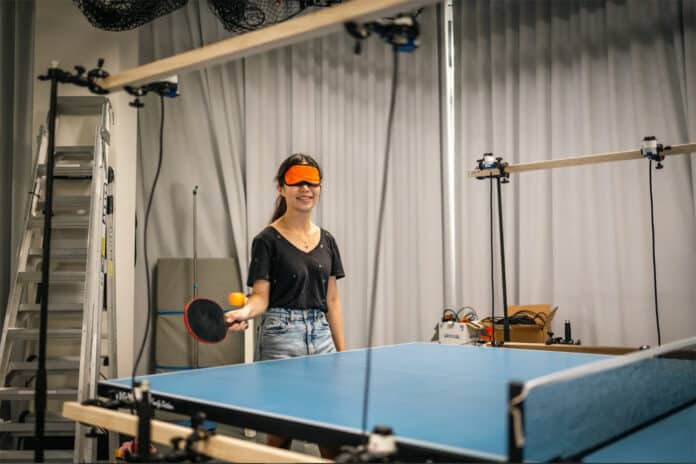Table tennis, also known as ping pong, is a sport that has been enjoyed for many years, offering a more accessible option for those who want to play tennis. It is a beginner-friendly sport while maintaining a rich level of competitive play. Unfortunately, like many sports, it can be challenging for people who are blind or have low vision to participate.
That’s why Phoebe Peng, an Engineering Honours student at the University of Sydney, is working on a project that aims to allow people with low vision and blindness to play ping pong using sound.
Her experimental new system incorporates a traditional table, paddles, and ball, as well as neuromorphic cameras and an array of loudspeakers.
“The small size of the ball and table, along with the movement of the ball in 3D space, are things that make table tennis difficult to play for those with low vision and complete blindness,” said Peng, who completed the work as part of her Honours thesis. “Making this sport more accessible while also exploring the potential of neuromorphic cameras were my two biggest motivators.”
According to Peng, the neuromorphic cameras used in this technology are well-suited for tracking small objects like table tennis balls. The cameras track the movement of objects within their field of view via local changes in brightness, which are detected by individual pixels on the image sensor. Unlike normal cameras that capture complete images of a scene, these cameras track changes in an image over time.
By using two perfectly positioned cameras, Peng was able to identify and track the ball in three dimensions in real time. She then fed that data into an algorithm that controlled an array of loudspeakers along the sides of the table, which created a sound field that accurately matched the current position of the ball.
Although this system seems to work well, Peng believes that more experimentation is needed before it will be ready for actual play.
“An ongoing technical challenge is the matter of human perception of sound,” Peng said in a statement. “There are limitations on how accurately people can perceive sound localization. What type of sound should be used? Should the sound be continuous? This is a technical challenge we’ll be tackling in the next stage of development.”
